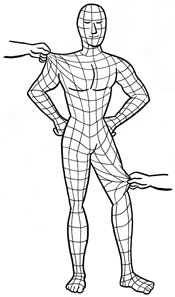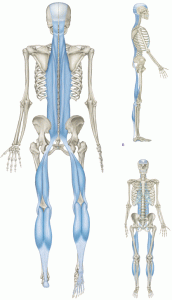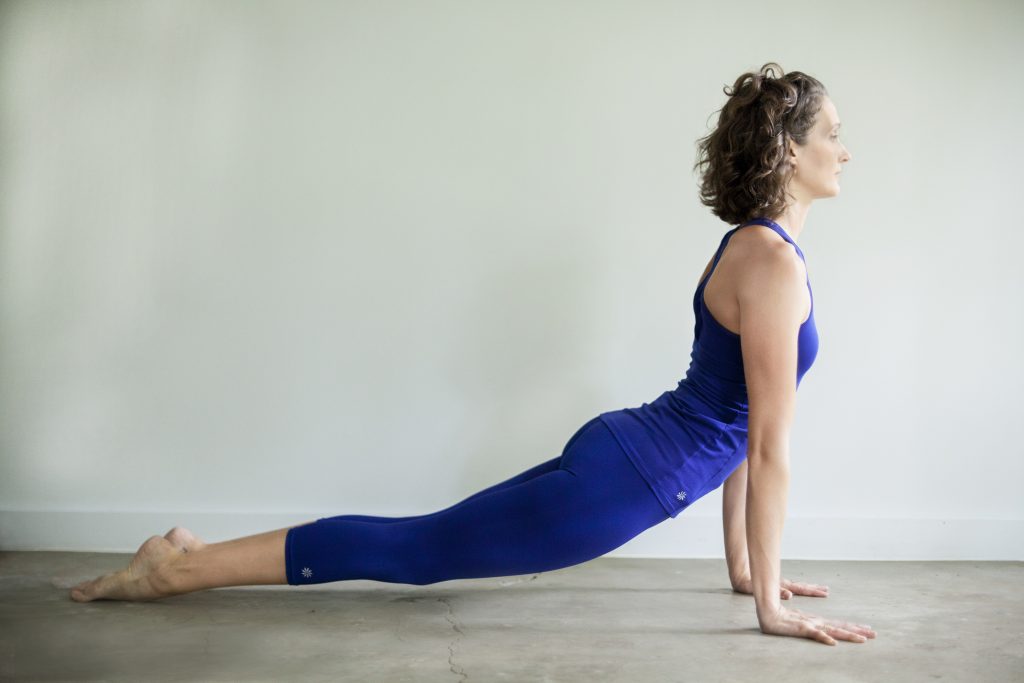September 3rd is the first of four yoga workshops focusing on fascia. We will cover the Superficial Backline aka the Dorsal Sheath in this first class. For more information read Anna’s blog below and click here to sign up online!
Fascia and the Superficial Back Line (SBL)
What is fascia? Simply put, fascia is connective tissue. There are many types of fascia within the body but in our workshop we will specifically be working with long sheaths of fascia that are part of Tom Myers theory of Anatomy Trains. One of the key jobs of fascia is to distribute force throughout the body. When you walk the weight of your body transmits from your foot up the entire structure of bones and muscles. These bones and muscles are wrapped in fascia which helps to distribute the workload throughout your body. Fascia not only supports the structure of your body but also affects your posture and movement. What is the SBL?
Simply put, fascia is connective tissue. There are many types of fascia within the body but in our workshop we will specifically be working with long sheaths of fascia that are part of Tom Myers theory of Anatomy Trains. One of the key jobs of fascia is to distribute force throughout the body. When you walk the weight of your body transmits from your foot up the entire structure of bones and muscles. These bones and muscles are wrapped in fascia which helps to distribute the workload throughout your body. Fascia not only supports the structure of your body but also affects your posture and movement. What is the SBL?  The SBL, also known as the Dorsal Fascial Sheath, runs the entire distance of the back side of the human body. It begins with the plantar fascia on the sole of the foot, runs up the back of the legs, attaches to the sacrum, continues up the length of the spine and neck and wraps around the skull until ending at the brow line. What is the purpose of the SBL? Since the SFB has the demanding job of holding the body erect while standing, it is comprised of dense sheets of fascia such as the achilles tendon and the sacrotuberous ligament. The entire line from feet to head acts like a guy-wire to keep us upright. Depending on your posture you may have restriction in part or all of the SBL or you may be over stretched on the backside and compressed in the front body. In either case working to lengthen or strengthen the SBL will help the preserve the health and longevity of your spine! Common Postural Compensation Patterns Associated with the SBL-
The SBL, also known as the Dorsal Fascial Sheath, runs the entire distance of the back side of the human body. It begins with the plantar fascia on the sole of the foot, runs up the back of the legs, attaches to the sacrum, continues up the length of the spine and neck and wraps around the skull until ending at the brow line. What is the purpose of the SBL? Since the SFB has the demanding job of holding the body erect while standing, it is comprised of dense sheets of fascia such as the achilles tendon and the sacrotuberous ligament. The entire line from feet to head acts like a guy-wire to keep us upright. Depending on your posture you may have restriction in part or all of the SBL or you may be over stretched on the backside and compressed in the front body. In either case working to lengthen or strengthen the SBL will help the preserve the health and longevity of your spine! Common Postural Compensation Patterns Associated with the SBL-- Ankle flexion limitations
- Hyperextension of the knee
- Shortening of the hamstrings
- Forward pelvic shift
- Lordosis and kyphosis
- Cervical hyperextension
- Plantar Fasciitis and heel spurs
- Knee pain from hyperextension or torsion
- Sacrum pain and si joint instability
- Lumbar spine compression, increased propensity for lumbar spine injuries
- Thoracic spine tension
- Headaches from occipital tightness
